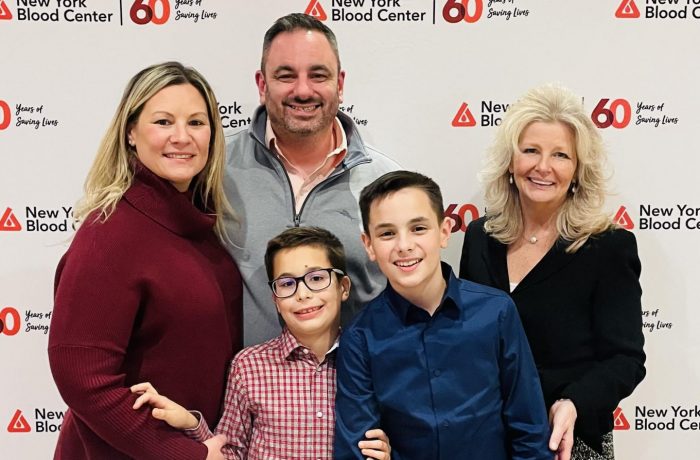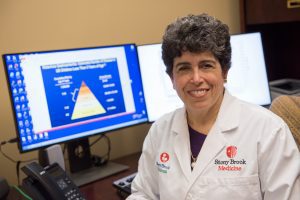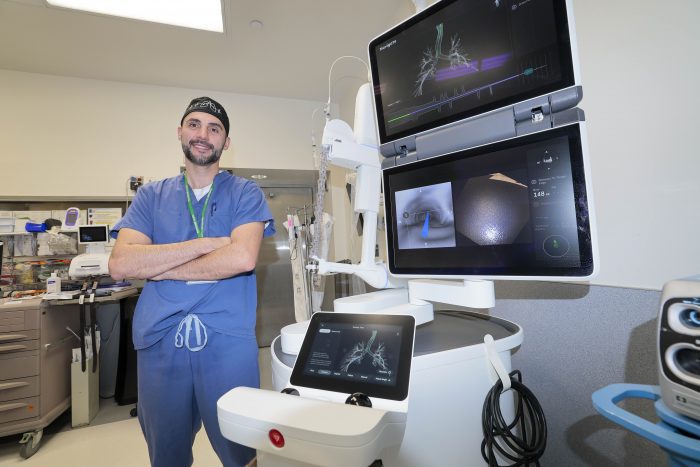Vinny Cusumano, a young advocate for blood donations, received over 30 blood and platelet donations through transfusions during his treatment for kidney cancer.
New York Blood Center (NYBC) honored 12-year-old pediatric cancer survivor Vinny Cusumano at their recognition event for top platelet donors at Watermill Caterers in Smithtown. Vinny spoke to platelet donors at the event and thanked them for their life-saving contributions to the blood supply. Vinny’s family has been a fierce advocate for blood and platelet donations, partnering with NYBC on blood drives and other awareness campaigns through their nonprofit organization, Vinny’s Army, which is dedicated to supporting children diagnosed with cancer and their families.
In his remarks at the event, Vinny expressed heartfelt gratitude to the platelet donors in attendance. “There was never a question when my doctor told me that I needed a transfusion if one was available,” said Vinny Cusumano. “I know my parents tell me that New York Blood Center always needs donations and this is the reason why. I am the reason why. And I’m standing here today talking to all of you about my story because all of you have helped get me here.”
Vinny Cusumano was diagnosed with a rare and aggressive form of kidney cancer in October of 2022. He received over 30 donations of blood and platelets through transfusions during the intense chemotherapy and radiation treatments that were needed to save his life.
Vinny’s Army works to support children diagnosed with cancer and their families by providing unconditional love and support to ensure no family faces this battle alone. According to NYBC, 25 percent of the blood supply is used by patients battling cancer. Vinny’s Army has advocated for blood donations to support pediatric cancer patients who may require transfusions for their treatment.
“We are grateful to Vinny Cusumano and his incredible family for their advocacy efforts to ensure that the region has a robust blood supply to serve cancer patients who rely on blood donations for vital treatment,” said Andrea Cefarelli, Senior Vice President at New York Blood Center Enterprises. “From hosting blood drives, to participating in speaking engagements and spreading awareness, Vinny’s Army has been a great partner and we can’t think of a better organization to honor at our platelet donor event.”
Blood donors can give every 56 days, and platelet donors can give twice per month. The Food and Drug Administration (FDA) recently lifted several blood donor eligibility restrictions. To view current eligibility guidelines, visit nybc.org or call 800.688.0900.
To make an appointment at a donor center near you, donors can call 1-800-933-2566 or visit nybc.org. Can’t donate blood? You can still support NYBC’s mission by texting ‘NYBC’ to ‘20222’ to give $25.
# # #
About New York Blood Center
Founded in 1964, New York Blood Center (NYBC) has served the tri-state area for more than 60 years, delivering 500,000 lifesaving blood products annually to 150+ hospitals, EMS and healthcare partners. NYBC is part of New York Blood Center Enterprises (NYBCe), which spans 17+ states and delivers one million blood products to 400+ U.S. hospitals annually. NYBCe additionally delivers cellular therapies, specialty pharmacy, and medical services to 200+ research, academic and biomedical organizations. NYBCe’s Lindsley F. Kimball Research Institute is a leader in hematology and transfusion medicine research, dedicated to the study, prevention, treatment and cure of bloodborne and blood-related diseases. NYBC serves as a vital community lifeline dedicated to helping patients and advancing global public health. To learn more, visit nybc.org. Connect with us on Facebook, X, Instagram, and LinkedIn.























 YIELD: Serves 4
YIELD: Serves 4


